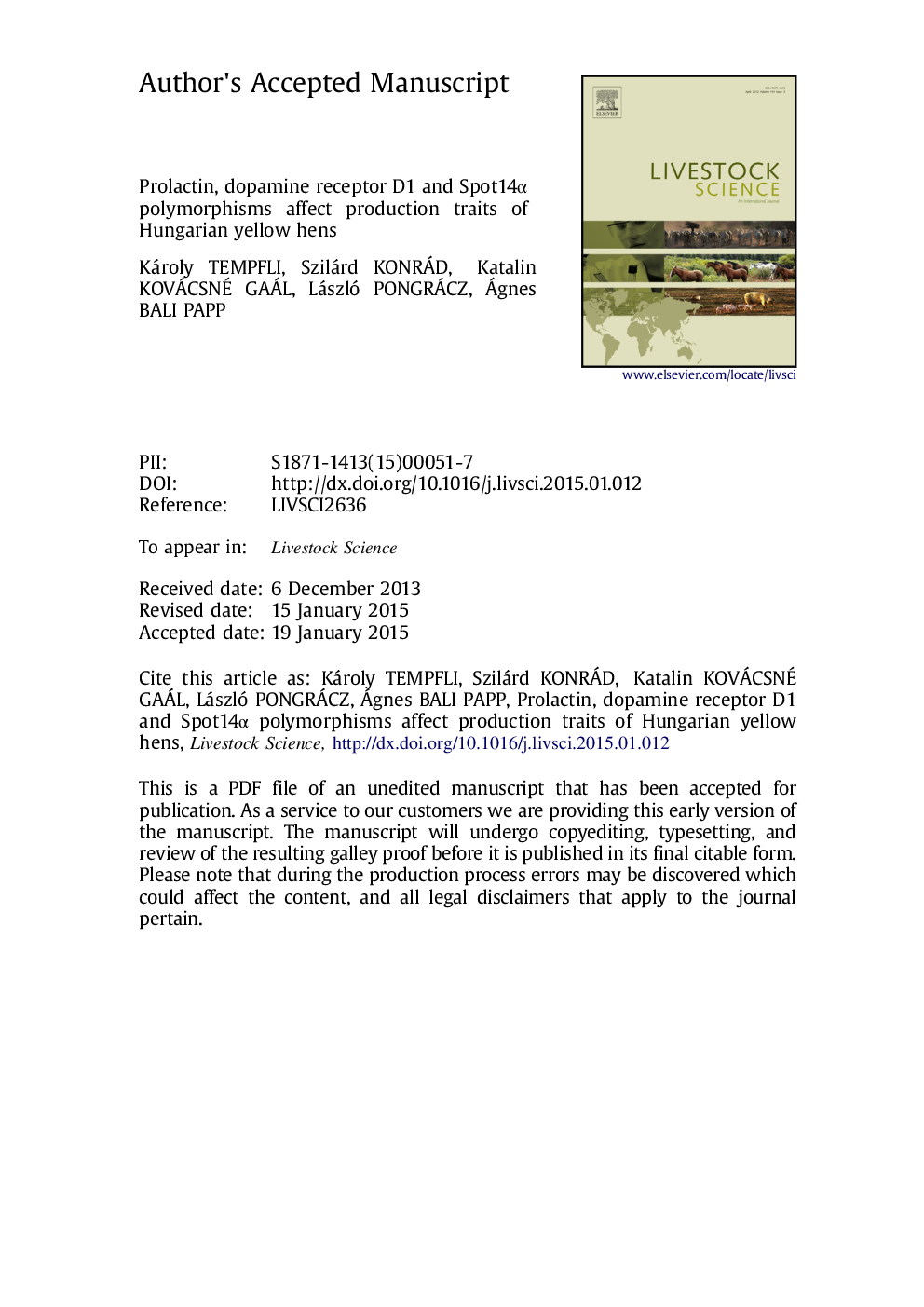| Article ID | Journal | Published Year | Pages | File Type |
|---|---|---|---|---|
| 5790048 | Livestock Science | 2015 | 18 Pages |
Abstract
Six potential candidate polymorphisms were investigated in Hungarian Yellow hens, one of seven indigenous chicken breeds registered in Hungary. In this study, 436 individuals were genotyped for the 24-base-pair indel in prolactin (PRL), the G123A single nucleotide polymorphism (SNP) in dopamine receptor D1 (DRD1), and the A213C SNP in thyroid hormone responsive spot14alpha (Spot14α) genes, respectively. In addition, promising SNPs in insulin-like growth factor 1 (IGF1), insulin-like growth factor-binding protein 2 (IGFBP2), and somatostatin (SST) genes were also analysed; however, only one allele at each locus occurred in the population. There were polymorphisms for PRL, DRD1 and Spot14α, each with high heterozygosity (0.50, 0.49, and 0.47, respectively). Observed genotype frequencies did not differ (P>0.05) from the expected assuming Hardy-Weinberg equilibrium (HWE). The PRL genotype was associated with egg production intensity (P<0.05), whereas DRD1 genotype affected egg production intensity and body weight at 45 weeks (wk) of age (P<0.05). The Spot14α polymorphism significantly influenced body weight from 8 to 14 wk (P<0.05), and at 40 and 45 (P<0.01) wk, and was also associated with average egg weight between 40 and 45 wk. Sequencing PCR products revealed two novel SNPs in Spot14α and SST. Furthermore, seven polymorphisms already described in other breeds were also detected in PRL, DRD1 and Spot14α. The analysed polymorphic markers provide potentially useful information for breed improvement.
Related Topics
Life Sciences
Agricultural and Biological Sciences
Animal Science and Zoology
Authors
Károly Tempfli, Szilárd Konrád, Katalin Kovácsné Gaál, László Pongrácz, Ágnes Bali Papp,
